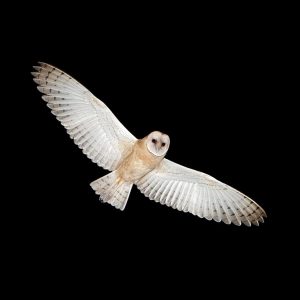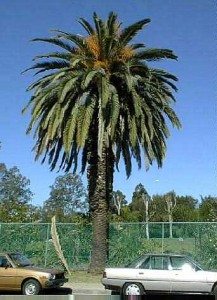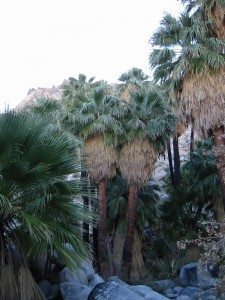Barn Owls in our urban Bay Area
By Lisa Owens Viani
My owl obsession began when I moved to Berkeley in 2003. One evening while on an evening walk with a friend, she pointed out what she thought was the sound of someone breathing with the help of a respirator in a house on Edwards Street. That didn’t seem quite right — I instantly thought “bird” — but I wasn’t expecting to hear owls in such an urban spot.
I called a birder friend who suggested the possibility of a Barn Owl. Sure enough, upon closer inspection, we confirmed that the sound was coming from a Canary Island palm tree behind the house with the “respirator.” Then we spotted Barn Owls flying in and out of the tree, pearl white in the dark sky, backlit by the moon, making trip after trip to feed their young.

But not everyone was as enamored with the owls — or their sounds — as I was, and the tree was cut down. I decided to found Keep Barn Owls in Berkeley, with the help of naturalist Joe Eaton and some other owl fans, to create more awareness about the incredible natural pest control services of these owls: One family can consume 600 mice in 10 weeks.
I connected with The Hungry Owl Project in Marin and local owl experts like Golden Gate Bird Alliance field trip leader Dave Quady, and began to get a grasp on the number of Barn Owls this city supports. I learned of about a dozen pairs nesting in Berkeley alone that year, most in Canary Island palm trees, many of which stand next to Victorians and thus were probably planted in the early 1900s. (I also learned about nests in El Cerrito, Albany, and Richmond, again most of them in Canary Island palms.)
In what may be the least controversial Berkeley city council resolution ever passed, we got the Barn Owl designated as the city’s official bird.
Berkeley’s Barn Owls have been here a long time. In a 1927 account in The Condor, UC Berkeley zoologist E. Raymond Hall wrote about the Barn Owls he discovered roosting in the tower of the First Presbyterian Church at Dana and Channing Way. Hall gained entrance to the tower and dissected the owls’ pellets. The most common prey remains were California meadow mice, pocket gophers, white-footed mice, and house mice. One pellet contained a Jerusalem cricket! Hall also wrote about hearing “as many as 17 barn owls” fly over his home on Panoramic Way one summer evening.

Today Berkeley’s open fields and barns are gone and the church steeples and bell towers screened off. But the Barn Owls have adapted. This summer, during a nighttime walk, I discovered a Barn Owl family in a palm tree on the Berkeley Unified School District property at Bonar and Addison. I first heard the fledglings in mid-June, although they certainly may have been calling before I heard them; by the end of July they had dispersed. This time their chosen palm tree was a Washingtonia filifera—much taller and skinnier than the stouter Canary Island palm. Washingtonias look like they are wearing long hula skirts, with dead thatch hanging down around their trunks.

I have a new appreciation for this somewhat scraggly looking tree now that I know Barn Owls can use them. Of course, the entire time I was watching the young being fed by their parents, learning to branch, and then fly, my heart was in my mouth, worried that they might eat poisoned rats: The School District had placed poison bait boxes less than 200 feet away from the owls. Thankfully the District agreed to remove the boxes.

If you love owls, please don’t use rat poison. Imagine a Barn Owl in every palm tree in Berkeley. It might be a little loud for a few months each summer, but a much less environmentally-damaging way to control rodents.
Barn Owl
- Latin name: Tyto alba
- Type of habitat: Like hunting in open fields and meadows but have adapted to cities. Great-horned Owls will prey on Barn Owls.
- Season: Can be seen year-round in the Bay Area, more commonly in spring/summer — usually at night.
- Conservation status: Common.
- More info: See the Barn Owl section of AllAboutBirds. org, by the Cornell Lab of Ornithology.
————————————-
Lisa Owens Viani is Communications Manager for the Coral Reef Alliance and Co-founder of Raptors Are The Solution. She was formerly Development Director at GGBA.
